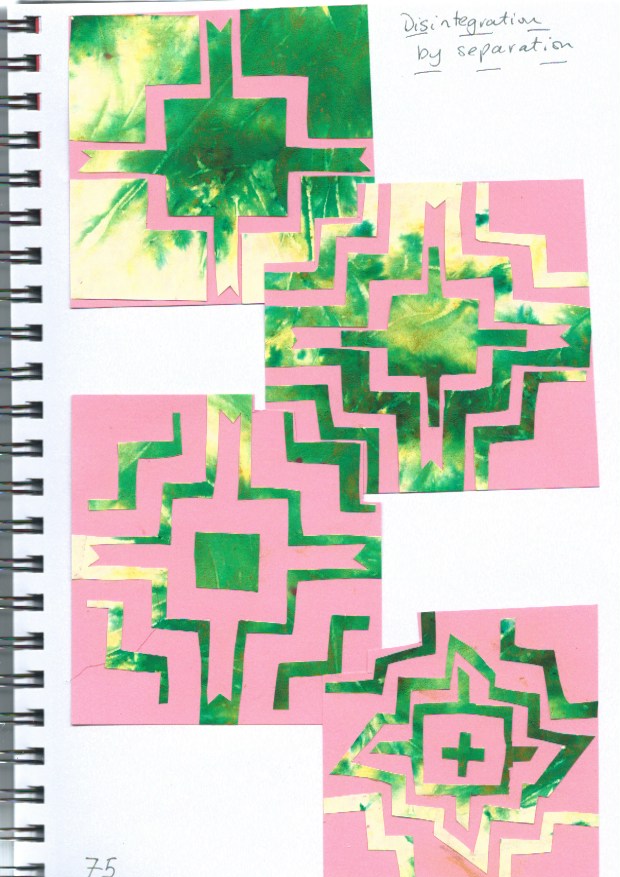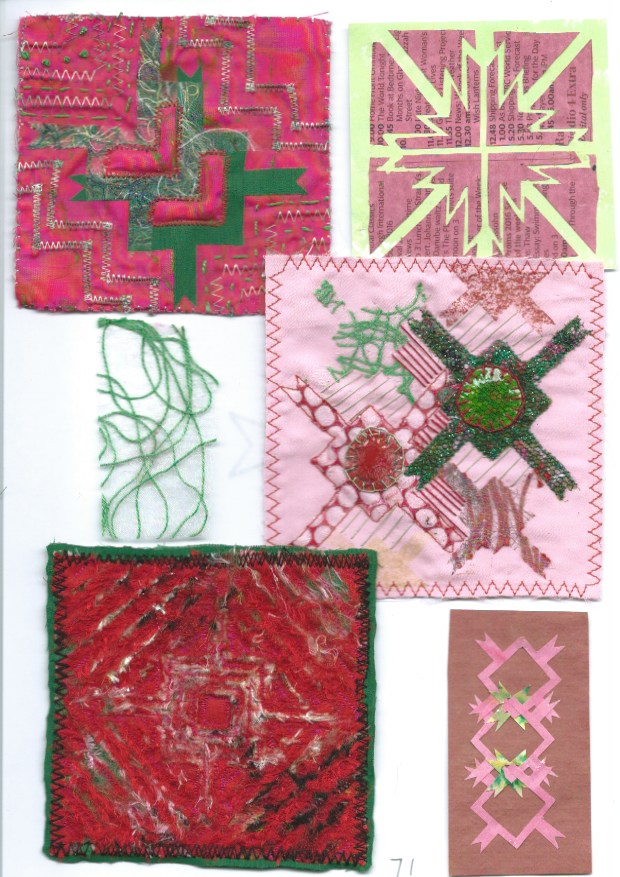I started to create my resolved sample by using my cross shape and breaking it and reducing it in size (Design 1).
 |
| Design 1 |
Next, I cut out the shapes in paper (Design 2).
 |
| Design 2 |
I decided to add some distortion to the shape (Design 3).
 |
| Design 3 |
I started to look at background fabrics (Designs 4 and 5).
 |
| Design 4 |
 |
| Design 5 |
I decided I didn't like the design, so started again! (Design 6). I wanted to create the effect of the shapes disappearing into the centre of the design, disintegrated as they got closer to the middle. The shapes on the outside edges are distorted as they fall to the centre. The main green shape is above the centre but hasn't started to fall yet.
 |
| Design 6 |
I wanted to create a background fabric that became lighter in colour in the centre. I used green transfer paint on silk. I knew I would not get a very dark print first time round so I printed again over the first print, this time with a circle cut out of the centre of the paper. Next I made two new stamps. Using all three stamps I have tried to create the effect of distance, using the smallest stamp in the centre and the largest on the edge. (Design 7)
 |
| Design 7 |
I cut out paper shapes to see if the effect I was hoping to achieve had worked. I am pleased with the result, (Design 8). It is a shame that the the background print has not shown up very well in the scan.
 |
| Design 8 |
I decided that the background fabric was too pale so I used silk paints on white silk and printed with my lamb chop stamps again. The centre is pale green with darker green around the edges (Design 9).
 |
| Design 9 |
SKETCH BOOK
 |
| Scanned Image of Resolved Sample |
I made a new frame for the mounted version. I stiffened the craft vilene by painting it with diluted PVA glue and then painted it in grey, red, green and white. This is slightly lighter than the first version, to reduce the difference in colour between the frame and the mount. I changed the shape of the frame to keep it in the style of the cross shape I have been working with throughout this module.
 |
| Photograph of Mounted Resolved Sample against a Red Background |








































